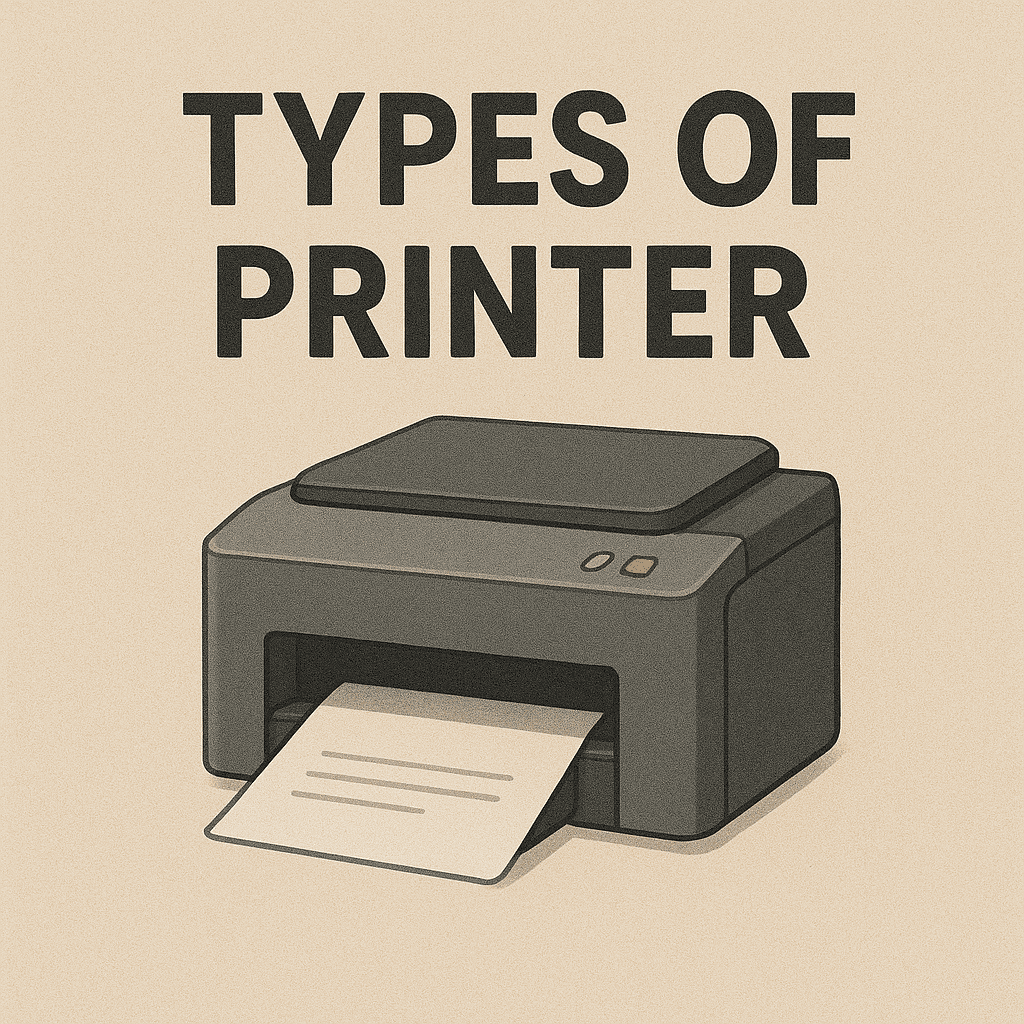Types of Printers: A Comprehensive Guide
Types of Printers: A Comprehensive Guide Printers are essential tools in homes, schools, and businesses, enabling us to transform digital documents into physical copies. Over the years, various types of printers have been developed, each designed to serve specific purposes. This guide explores the most common types of printers, highlighting their features, advantages, and ideal use cases. 1. Inkjet Printers Overview: Inkjet printers spray tiny droplets of ink directly onto the paper to form images or text. Pros: High-quality color printing Suitable for photos and graphics Generally affordable upfront Cons: Ink cartridges can be expensive Slower than laser printers for high-volume printing Inkjet Printer Best For: Home users, photo printing, and small offices with light print needs. 2. Laser Printers Overview: Laser printers use a laser beam and toner powder to produce text and images on paper. Pros: Fast printing speeds Sharp text and graphics Cost-effective for high-volume printing Cons: Higher initial cost Not ideal for high-quality color images (in color models) Laser Printer Best For: Offices, schools, and businesses with large print volumes. 3. Dot Matrix Printers Overview: These printers use pins to strike an ink ribbon and form characters on paper. Pros: Can print multi-part forms (carbon copies) Durable and low operating costs Cons: Noisy Low resolution and poor graphics quality Dot matrix Printer Best For: Industrial environments and businesses that require carbon copy printing. 4. Thermal printers Overview: Thermal printers use heat to transfer images onto paper, either directly or via a ribbon. Pros: Quiet operation Low maintenance Compact design Cons: Prints may fade over time Requires special paper Laser Printer Best For: Receipts, labels, barcodes, and point-of-sale systems. 5. LED Printers Overview: Similar to laser printers but use light-emitting diodes instead of a laser beam. Pros: Fewer moving parts Reliable and fast Good print quality Cons: Limited availability compared to laser printers Laser Printer Best For: Offices needing fast, high-quality monochrome or color prints. 6. 3D Printers Overview: 3D printers create physical objects by adding material layer by layer based on digital models. Pros: Can build complex shapes and prototypes Wide range of materials (plastic, resin, metal) Cons: Expensive Slow production time Requires technical knowledge Laser Printer Best For: Prototyping, manufacturing, medical modeling, and creative industries. Conclusion The choice of printer depends on your specific needs—whether it’s for photo-quality images, high-volume text documents, labels, or even three-dimensional objects. By understanding the strengths and limitations of each printer type, you can make an informed decision that suits your home or business requirements.

